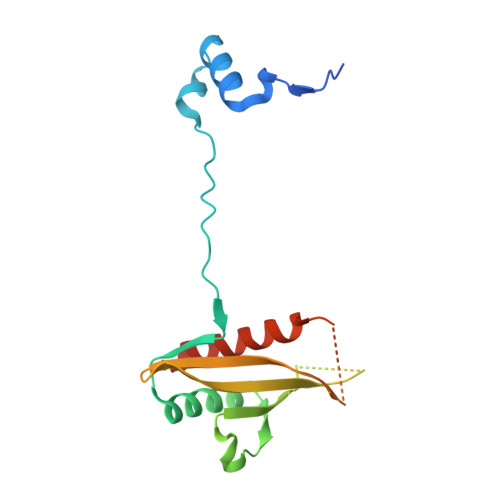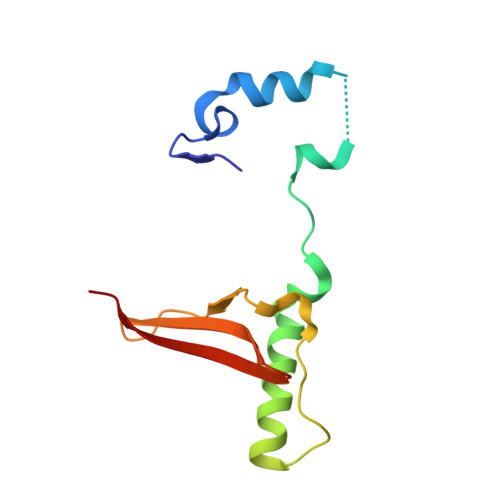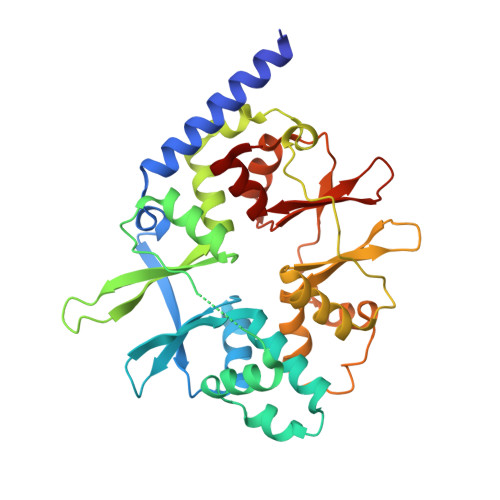ADP Regulates SNF1, the Saccharomyces cerevisiae Homolog of AMP-Activated Protein Kinase.
Mayer, F.V., Heath, R., Underwood, E., Sanders, M.J., Carmena, D., McCartney, R.R., Leiper, F.C., Xiao, B., Jing, C., Walker, P.A., Haire, L.F., Ogrodowicz, R., Martin, S.R., Schmidt, M.C., Gamblin, S.J., Carling, D.(2011) Cell Metab 14: 707-714
- PubMed: 22019086
- DOI: https://doi.org/10.1016/j.cmet.2011.09.009
- Primary Citation of Related Structures:
3T4N, 3TDH, 3TE5 - PubMed Abstract:
The SNF1 protein kinase complex plays an essential role in regulating gene expression in response to the level of extracellular glucose in budding yeast. SNF1 shares structural and functional similarities with mammalian AMP-activated protein kinase. Both kinases are activated by phosphorylation on a threonine residue within the activation loop segment of the catalytic subunit. Here we show that ADP is the long-sought metabolite that activates SNF1 in response to glucose limitation by protecting the enzyme against dephosphorylation by Glc7, its physiologically relevant protein phosphatase. We also show that the regulatory subunit of SNF1 has two ADP binding sites. The tighter site binds AMP, ADP, and ATP competitively with NADH, whereas the weaker site does not bind NADH, but is responsible for mediating the protective effect of ADP on dephosphorylation. Mutagenesis experiments suggest that the general mechanism by which ADP protects against dephosphorylation is strongly conserved between SNF1 and AMPK.
Organizational Affiliation:
MRC Clinical Sciences Centre, Cellular Stress Group, Hammersmith Hospital Campus, Imperial College, DuCane Road, London, UK.

















